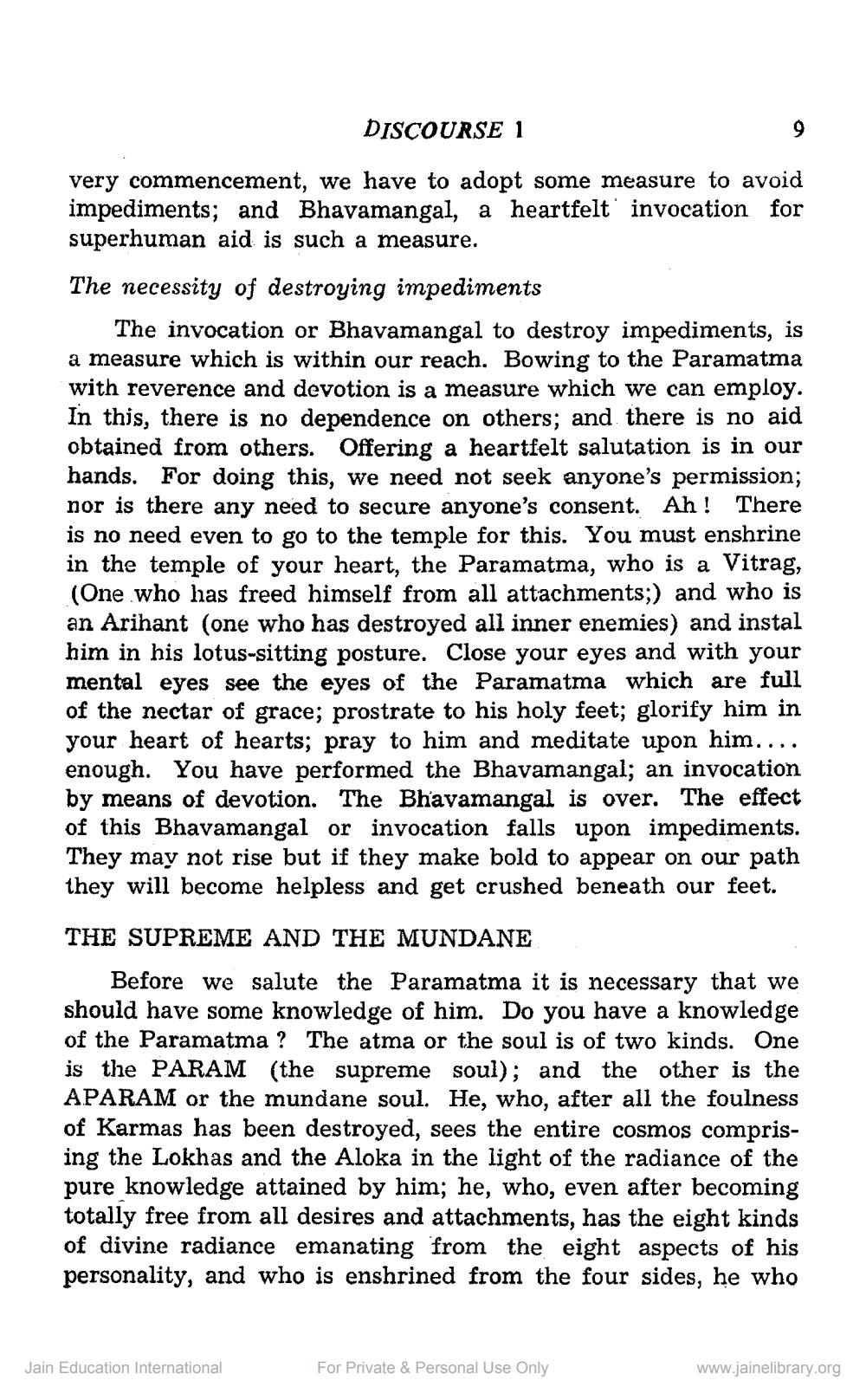________________
DISCOURSE 1
very commencement, we have to adopt some measure to avoid impediments; and Bhavamangal, a heartfelt' invocation for superhuman aid is such a measure. The necessity of destroying impediments
The invocation or Bhavamangal to destroy impediments, is a measure which is within our reach. Bowing to the Paramatma with reverence and devotion is a measure which we can employ. In this, there is no dependence on others; and there is no aid obtained from others. Offering a heartfelt salutation is in our hands. For doing this, we need not seek anyone's permission; nor is there any need to secure anyone's consent. Ah! There is no need even to go to the temple for this. You must enshrine in the temple of your heart, the Paramatma, who is a Vitrag, (One who has freed himself from all attachments;) and who is an Arihant (one who has destroyed all inner enemies) and instal him in his lotus-sitting posture. Close your eyes and with your mental eyes see the eyes of the Paramatma which are full of the nectar of grace; prostrate to his holy feet; glorify him in your heart of hearts; pray to him and meditate upon him.... enough. You have performed the Bhavamangal; an invocation by means of devotion. The Bhavamangal is over. The effect of this Bhavamangal or invocation falls upon impediments. They may not rise but if they make bold to appear on our path they will become helpless and get crushed beneath our feet.
THE SUPREME AND THE MUNDANE
Before we salute the Paramatma it is necessary that we should have some knowledge of him. Do you have a knowledge of the Paramatma ? The atma or the soul is of two kinds. One is the PARAM (the supreme soul); and the other is the APARAM or the mundane soul. He, who, after all the foulness of Karmas has been destroyed, sees the entire cosmos comprising the Lokhas and the Aloka in the light of the radiance of the pure knowledge attained by him; he, who, even after becoming totally free from all desires and attachments, has the eight kinds of divine radiance emanating from the eight aspects of his personality, and who is enshrined from the four sides, he who
Jain Education International
For Private & Personal Use Only
www.jainelibrary.org




